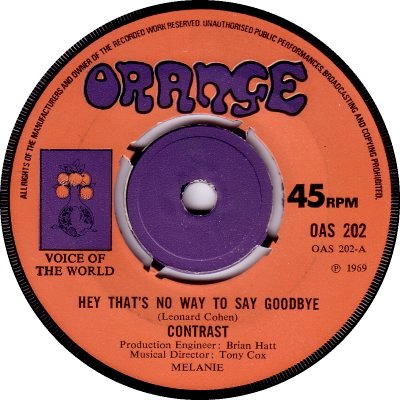
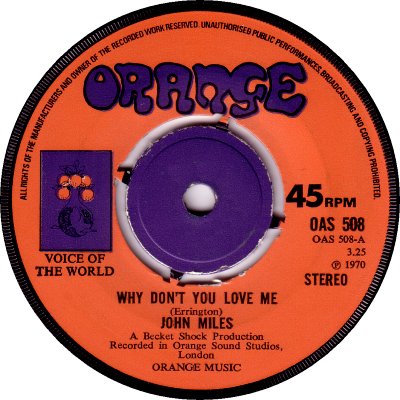
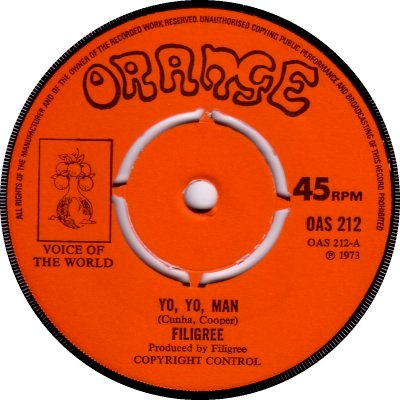
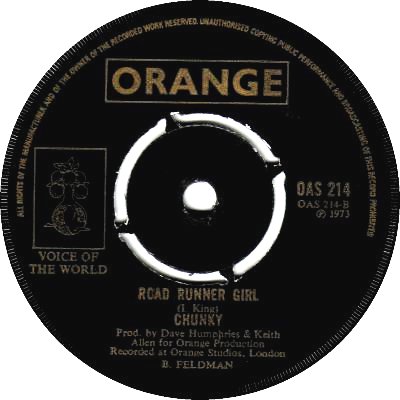
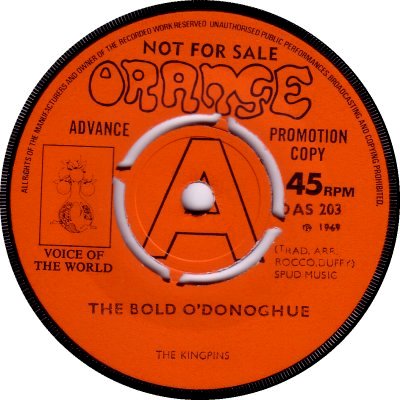
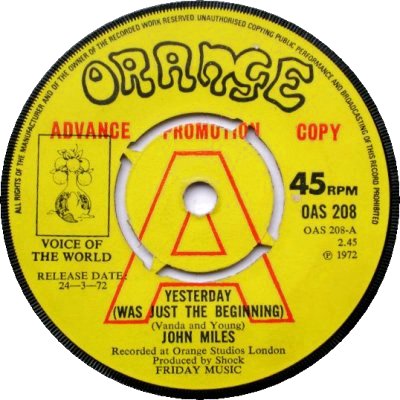
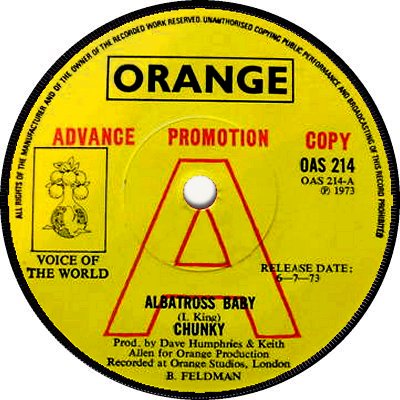
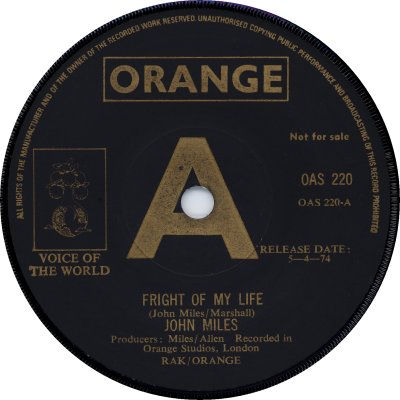
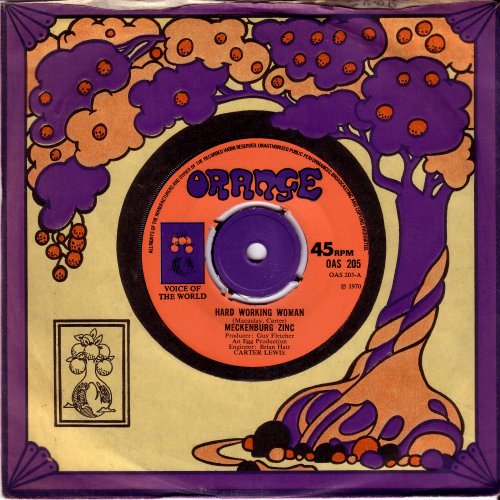
An offshoot of the recording studio set up by Ken and Clifford Cooper. The Orange label's first mention in the music press came in 'Record Retailer' of the 11th of June 1969, which said that its launch was being planned and a pressing and distribution deal was being set up; according to the article Orange's activities at that time extended to a publishing company and a recording equipment shop. There was a slight lull, perhaps due to the launch in August of the Country music label 'Lucky' (q.v.), which was initially a joint operation between Orange and Opry magazine but which became Orange's own when the company took over the magazine, in October. Then some four months after the initial announcement 'RR' of the 4th of October was able to reveal that a distribution deal with Pye had been signed and that the first Orange single, 'I Gotta Live' by John Harrington-Ure, was scheduled for release on the 24th of that month. In the event, however, the single was delayed until early November; when it appeared its title had been altered to 'I Want To Live' and the artists credited were 'The Influence'. Orange had ambitions: 'RR' of the 6th of December 1969 said that a new 'Progressive' label was planned. A new label, 'Amity' (q.v.), duly appeared in early 1970, but it was described in 'RR' of the 14th of February as a 'Pop / Bubblegum outlet', so perhaps the plans had changed. Orange's chief engineer Brian Hatt received a mention in 'RR' of the 13th of March 1970; his name can be found on several of the company's records, either as engineer or producer.
Five Orange singles, numbered in an OAS-200 series, were issued between November 1969 and April 1970 (OAS-204 appears not to have been released). The next two came out in September 1970; for some reason the '2' of the '200' was changed to a '5', and they were numbered OAS-507 and OAS-508. All of these records had a two-tone orange and blue label (1, 2) and a rather psychedelic-looking company sleeve (8). There were no releases during 1971, and both Lucky and Amity seem to have bitten the dust by that point; presumably Orange's other business interests were taking precedence at the time. Happily 'RR' of the 12th of February was able to break the news that the Orange label was back in business, and that it was to be distributed by Pye again, as it had been "till a year ago". The OAS prefix was retained but the numbers reverted back to the 200s, picking up where they had left off, at OAS-207. This time around the blue colour disappeared from the labels, leaving them plain orange (3). August 1973 saw a revamp of the label design, with a boxed name and the colours changing to a slightly sombre-looking gold-on-dark-brown (4); the first single to have the new label was OAS-213. 'Music Week' of the 1st of December 1973 said that £100,000 was to be spent on promoting Orange records, with Marti Webb being the first artist to benefit from the push, but if the money was spent it doesn't seem to have had a great deal of effect. 1974 saw just three singles by John Miles and a couple of export-only singles by an Icelandic group called Change. The final Orange single was released in November of that year.
Manufacture and distribution were by Pye throughout. Orange demos from OAS-205 onwards were in the usual Pye-family style: initially they had yellow labels with red print and a hollow 'A' (6, 7); latterly issue labels with a solid central 'A' - the 'A' was smaller than the usual Pye one, and was in gold rathher than black (8). Orange Records never matched the success of Orange Amplifiers, and its products are becoming increasingly hard to find nowadays. If you happen upon an Orange single it's most likely to be by John Miles, who made several singles for the label and seems to have been its best-selling artist by some distance. Time was to show that the company was right to have confidence in him, but sadly he found Chart success only when he joined Decca, after the Orange label had been discontinued. Thanks to Jim Sheridan for the scan of the yellow 'box' demo and to John Timmis for the other yellow demo scan.



Copyright 2006 Robert Lyons.

